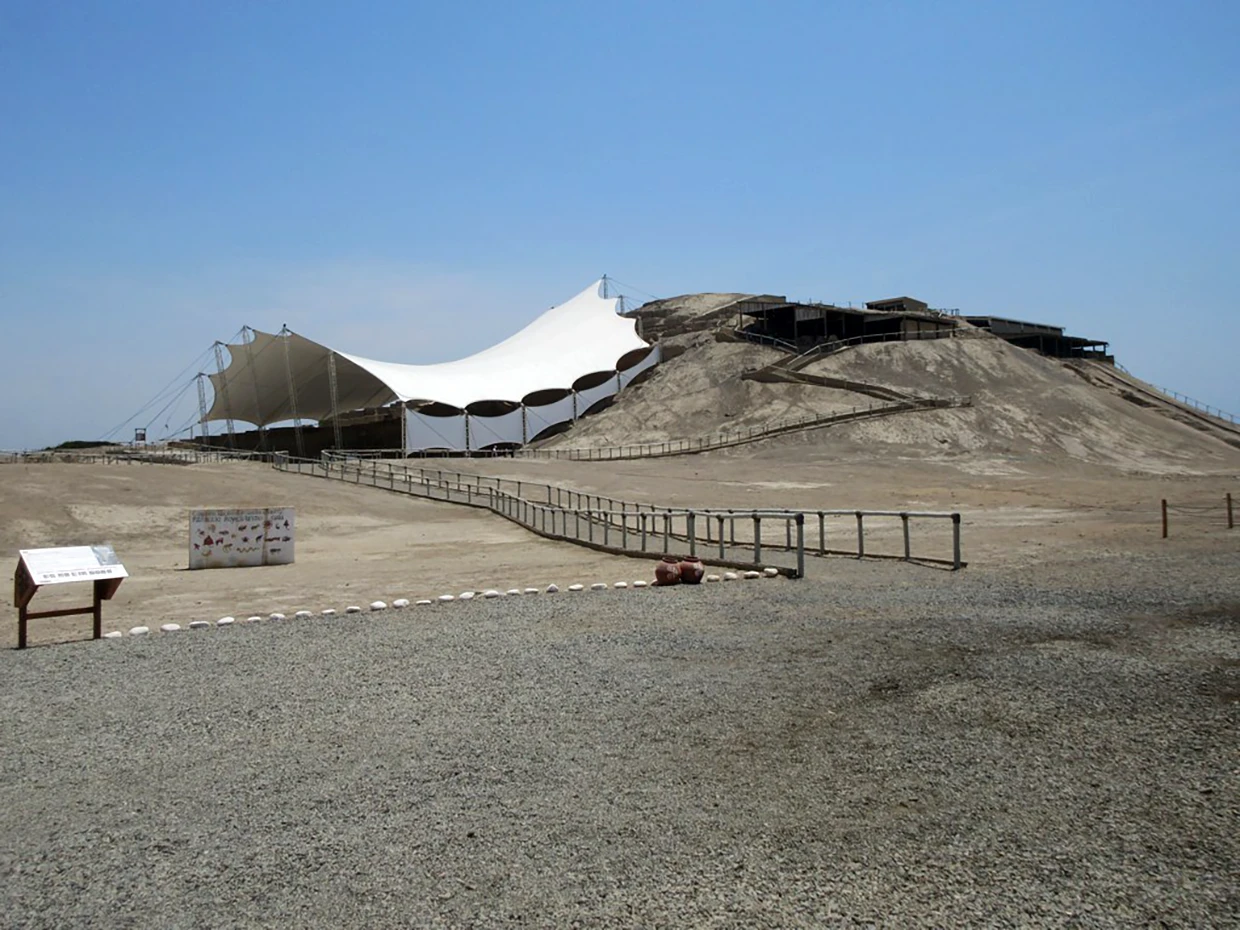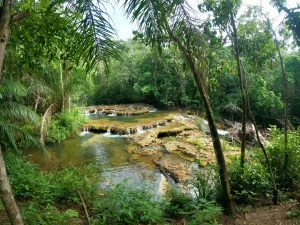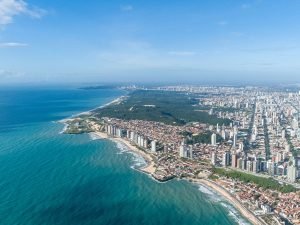Did you know or at least have you heard about the Moche culture in Peru? Well, the El Brujo huaca is one of the most important and oldest archaeological complexes on the northern Peruvian coast and is made up of three imposing buildings.
Contents
To introduce us to the topic, we tell you that this archaeological complex was built no less than 5,000 years ago and has three main monuments: Huaca Prieta, Huaca Cao Viejo and Huaca Cortada.
Site Cao Museum
If you visit this complex, a good idea is to start with the on-site museum located next to the Huaca Cao Viejo. There you can see artifacts found on site during excavations, such as ceramics, jewelry, textiles and other objects from the Moche culture. We share the link to the museum’s website where you can expand the information. Without a doubt, among the most significant thing that the museum offers is the famous Lady of Cao, a mummy discovered in the huaca.
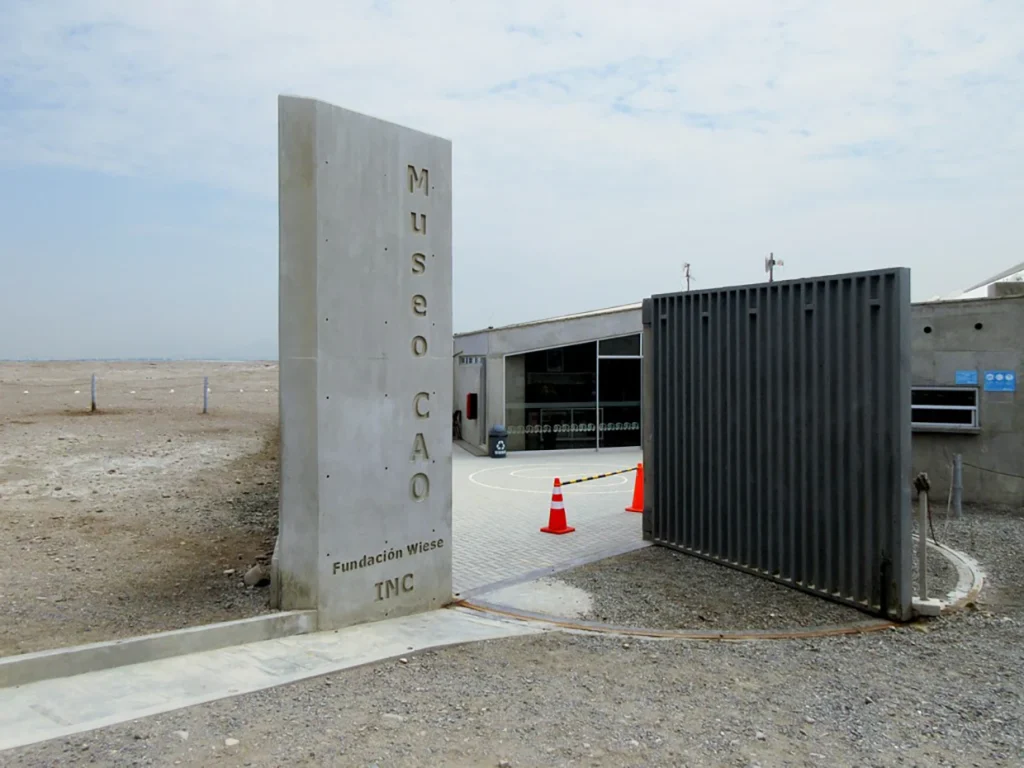
Huaca Prieta
It is a mound belonging to the pre-ceramic period, its age being approximately 12,500 BC. C. Its name is due to the enormous mass of ash and decomposed remains that give a very dark color to the land. These are cultural remains of sedentary farmers, who built semi-subterranean rooms of stone and mud, practiced textile art and made pyrography objects, with zoomorphic and anthropomorphic designs, although they were unaware of ceramics and the cultivation of corn.
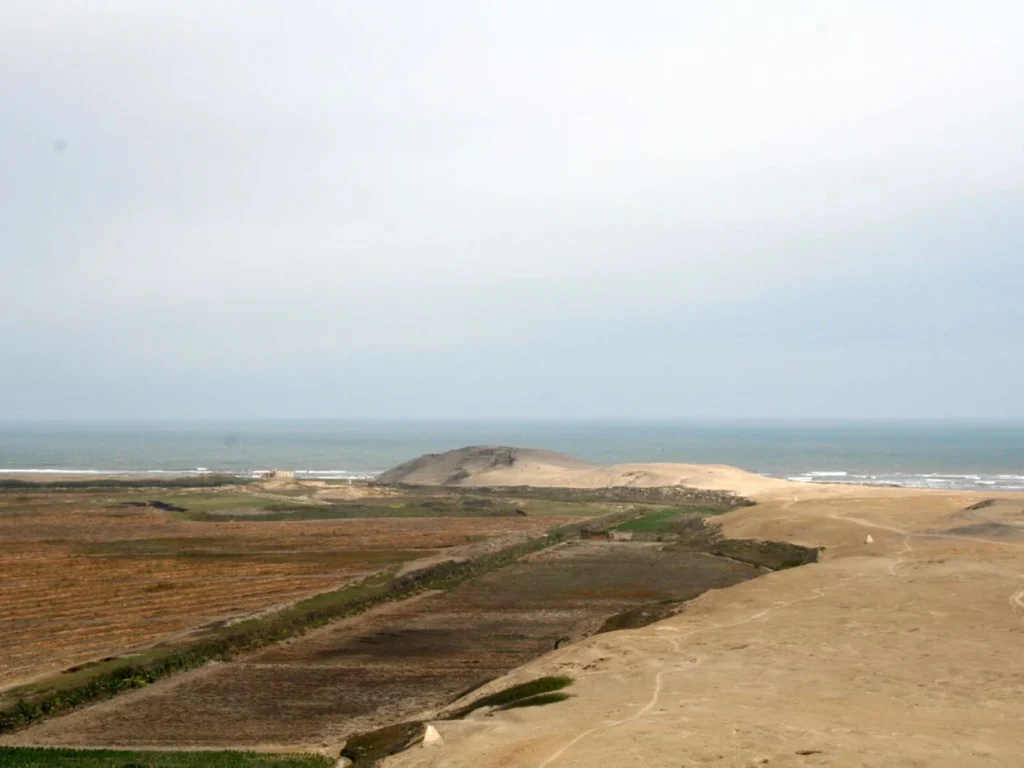
Huaca Cao Viejo
It is a truncated pyramid built between the 3rd and 7th centuries AD. C. based on adobe bricks. One of the things that will surely surprise you is how this pyramid has been built because it is made up of seven superimposed buildings, over five centuries. This was a characteristic ceremonial of Peruvian coastal cultures. The previous construction was always buried, raising a new one on top. The Huaca Viejo reached a height of 30 m and to access the top of the pyramid, there was a long ramp located on one side of the building. And in front of the building there was a walled ceremonial plaza.
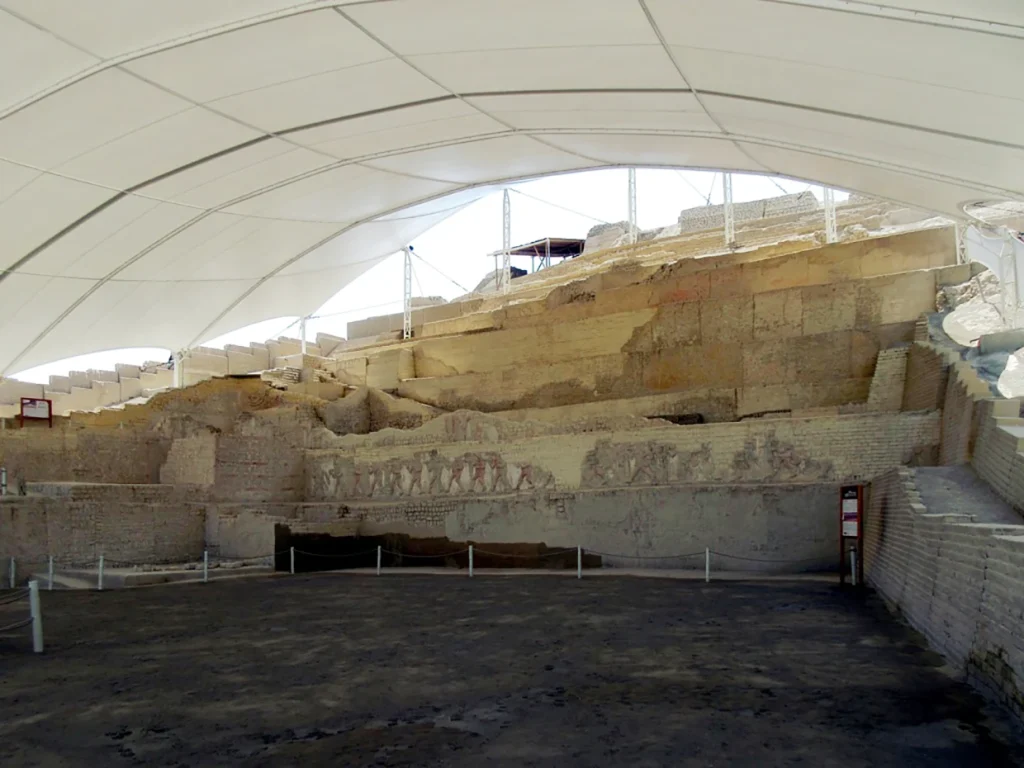
Colorful murals
It is believed that this huaca was a place intended for sacrifices. And so on the walls of some sectors of the pyramid you will see colorful murals in high relief, especially images of a group of captives tied with a rope around their necks, heading towards the “decapitator.” Another recurring motif is the representation of the deity Ai apaec and the figures of people tied by the hands, who have been called the “dancers”. They are similar to the designs that you can see on the Moche ceramic pieces that are in the museum.
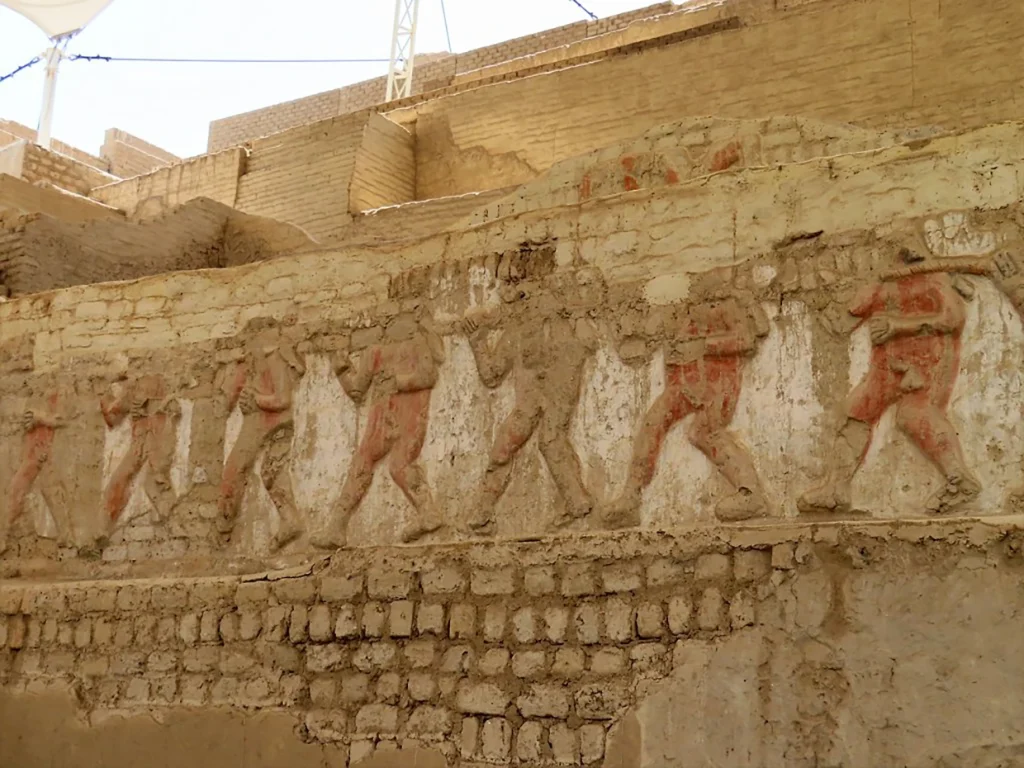
Mrs. Cao
On one of the platforms of this huaca, a tomb was discovered containing the mummified remains of a woman who was baptized as the Lady of Cao, who was possibly a Moche ruler of the Chicama Valley. It was covered by 18 necklaces of gold, silver, lapis lazuli, quartz and turquoise, thirty gold and silver nose ornaments, diadems and crowns of gilded copper. In the tomb, wooden scepters lined with copper were also found, used in ceremonies as symbols of power and hegemony, and various loose metal plates that covered the natural cotton shroud.
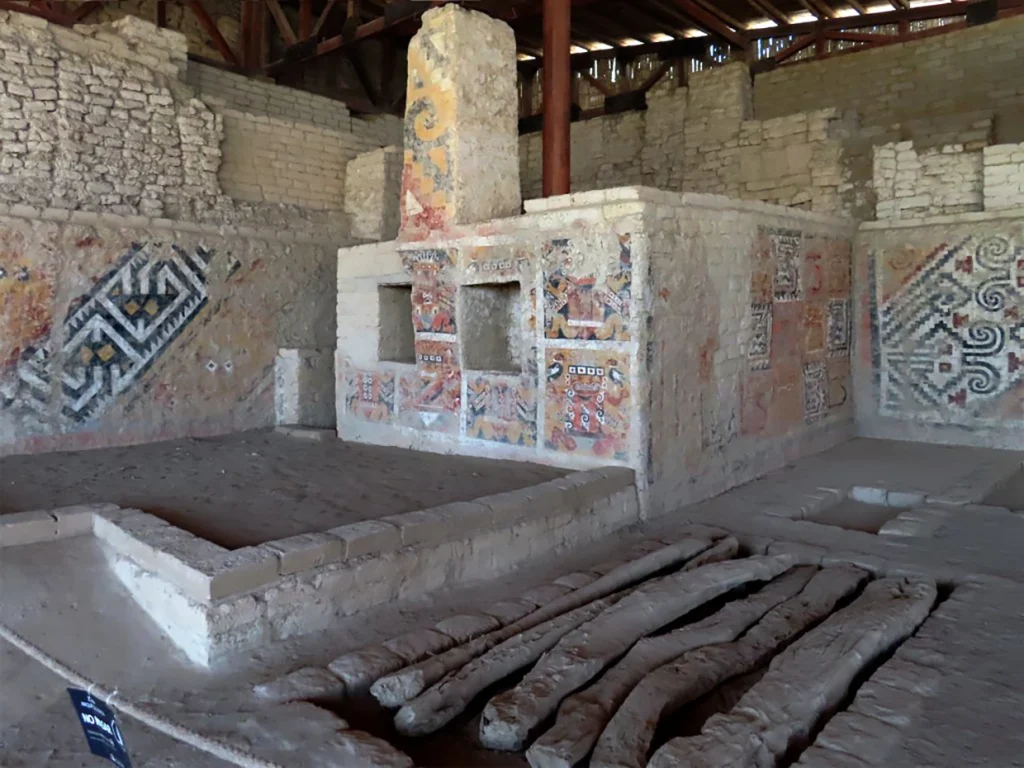
Huaca Cortada
In this case the name is due to the fact that in the center of its south façade it has a huge and deep ditch, 45 m long by 5 m wide, which practically divides it in two, possibly made by the huaqueros in their desire to find treasures. It is contemporary with the Huaca Cao Viejo, and occupies an approximate area of 10,000 m². It is located about 500 m northwest of the Huaca Cao Viejo, with which it forms the same group. Also in this huaca, walls with decorative friezes have been identified, with designs of fish, in which the colors yellow, red, white, gray and black were used.
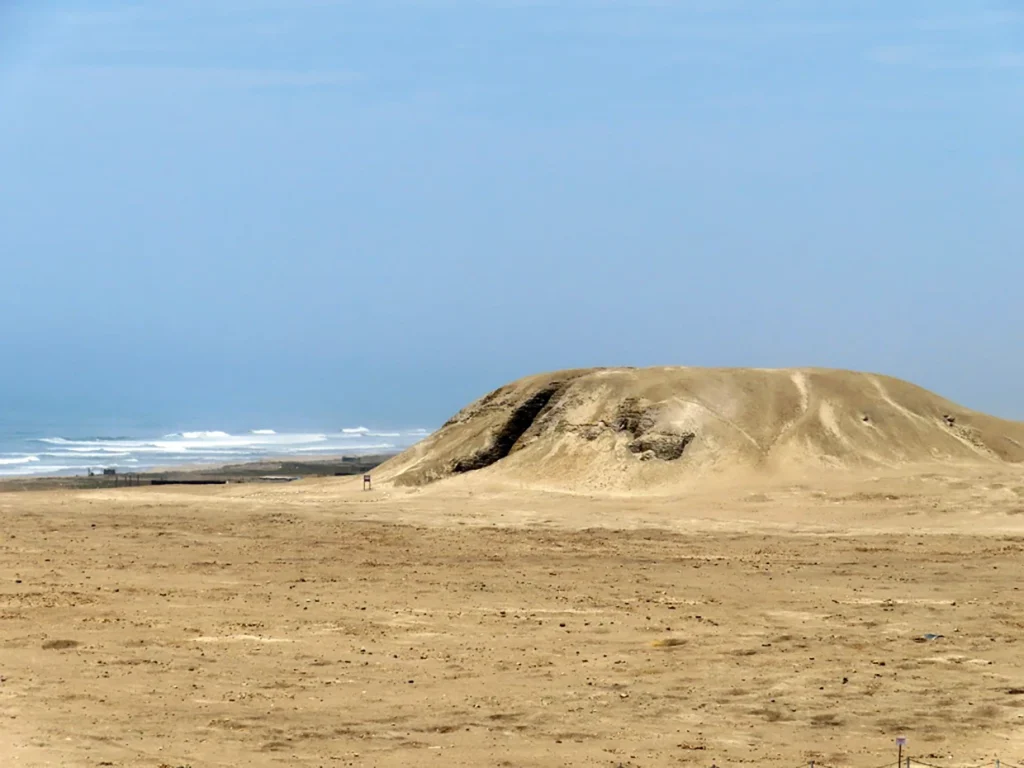
Landscape and natural environment
The Chicama Valley, where Huaca El Brujo is located, offers a beautiful landscape that combines the coastal desert with the Andes Mountains on the horizon. By visiting the site, you will be able to enjoy the panoramic views and appreciate the surrounding nature. It is known for being a fertile agricultural valley and for housing the Chicama River, which is the longest river on the Peruvian coast. Its climate is sunny and dry for most of the year, with temperatures that are usually warm during the day and cool at night. This makes it a favorable place for agriculture, especially for the cultivation of sugar cane, cotton, rice and various horticultural products. In addition to its natural beauty and historical heritage, the Chicama Valley is also recognized for being one of the main surfing destinations in Peru. Its beaches have waves of great quality and size, which attracts both national and international surfers.
Chicama Beach
Chicama Beach is famous for its long, consistent waves, making it a surfer’s paradise. The main wave, known as “The Point”, is a left-hand wave that can extend for over 2 kilometers in the right conditions. It is considered one of the longest waves in the world, ideal for maneuvering and enjoying long walks. The geography of the place, with a rocky bottom and a special configuration of the seabed, creates favorable conditions for the formation of quality waves. Additionally, local wind and currents help keep the waves consistent and clean. Playa Chicama is located in a quiet and relaxed area, away from the hustle and bustle of the cities. Here you can enjoy a serene and natural environment, ideal for resting and connecting with nature. The place attracts surfers from all over the world, from beginners to professionals. The beach has adequate infrastructure for surfers, including accommodation, restaurants and surf schools where you can rent equipment and take lessons. In addition to surfing, the beach is ideal for practicing other water sports such as fishing, kitesurfing and paddleboarding. It is important to note that sea and wave conditions can vary depending on the season and tides. Therefore, it is advisable to check with locals or surf experts for up-to-date information before visiting Playa Chicama.
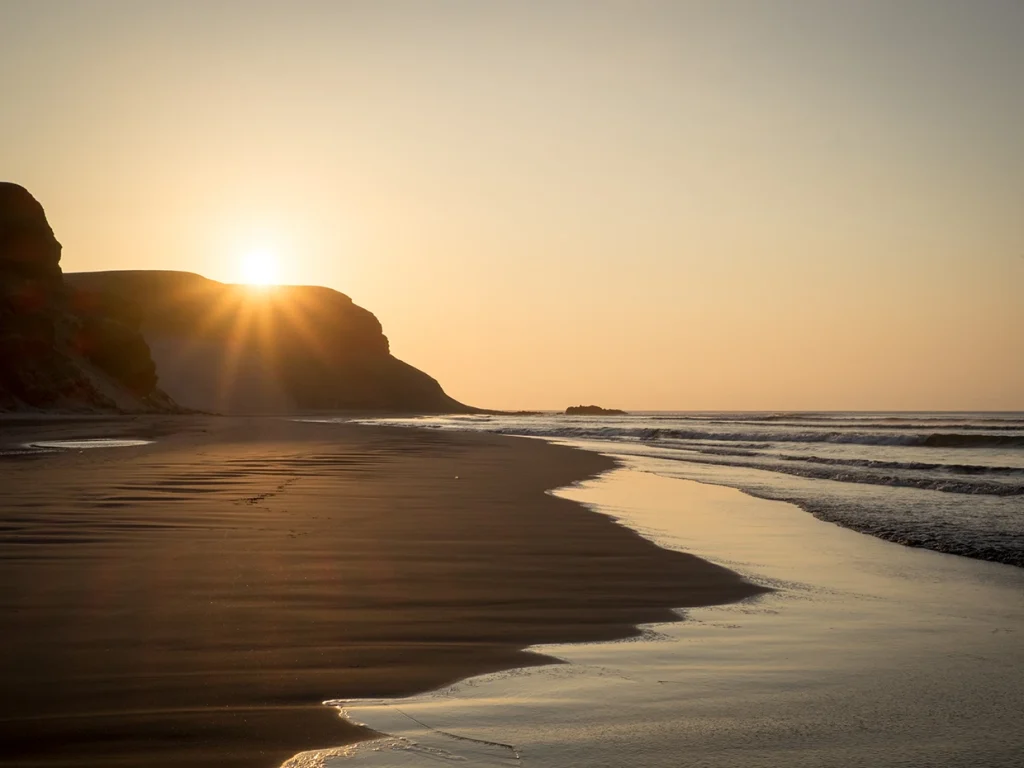
You may also like…
FAQ


What does huaca mean?
It is a Quechua word that designates the ancient burial sites or sacred places of the native American peoples. You will also find it written like guaca.
How to get to the El Brujo archaeological complex?
From Trujillo you must take a bus to Chocope (one hour). Another bus from Chocope to Magdalena de Cao (20 minutes). In the town of Magdalena de Cao, continue for 15 more minutes by motorcycle taxi to El Brujo.

